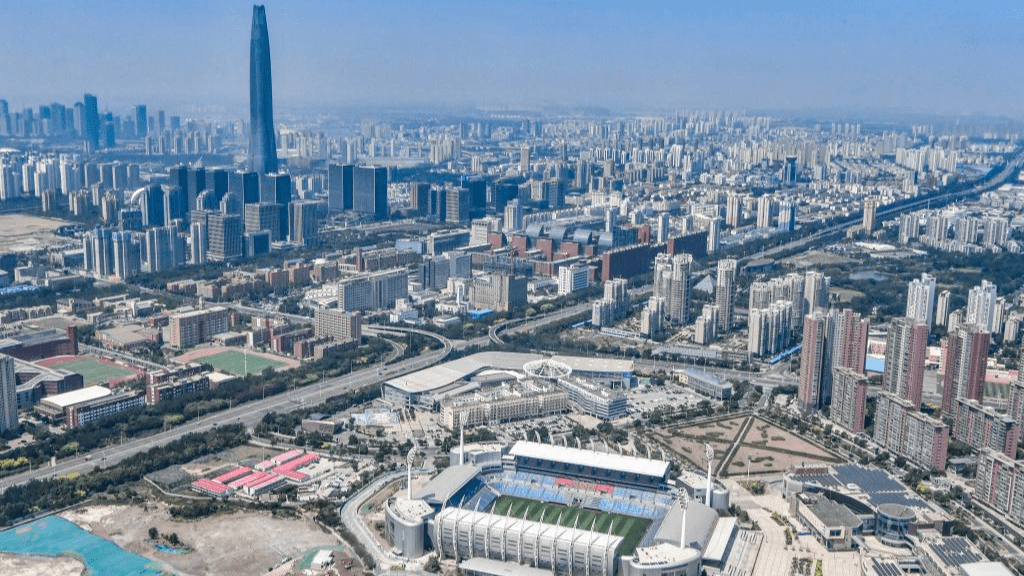
China’s economy continues to maintain stable and high-quality growth momentum, as value-added industrial production, the service sector, particularly information transmission and software and information technology services, consumption, High-tech manufacturing, fixed asset investment and overall trade showed healthy growth rates, according to data released May 17 by the China Bureau of Statistics for April.
Many leading analysts and economists also have strong confidence in China’s economic strength, as they reject the illusion that the Chinese economy has reached its peak, arguing that it makes little sense in today’s interconnected world. The world’s second largest economy faces some obstacles, mainly created by the US and certain challenges in the real estate market and the global economic slowdown, but is able to overcome them and maintain growth.
Rejecting this concept, a recent article in the Financial Times commented that although China’s stock market took a hit, this phase should not be categorized as a “crisis” nor should the growth potential of the Chinese domestic market be discounted – “one that is “certainly too big to be ignored” – anticipating that “perhaps only China will be ‘the next China’.” Noting private investments in artificial intelligence and impressive progress in industrial robot deployment and innovation, the report highlighted that China, although still in a major transition, had taken steps to stabilize the market and restore investor confidence.
Having transformed into the “factory of the world” and undergoing rapid urbanization in recent decades, which has allowed China to record miraculous growth rates in modern history for years, the Chinese economy is navigating a major transition, anchored in a consumption-led, value-added, technology-driven, green and high-quality growth.
Greater reliance on domestic consumption, which accounted for 73.7 percent of the country’s economic growth in the first quarter of 2024, is a key feature and strongest driver of China’s economy and high-quality growth. Increase in retail, food service and automobile sales and spending on luxury goods, robust recovery of the hospitality sector, a steady rise in incomes, declining urban unemployment and the emergence of new consumption patterns indicate efforts to boost people’s spending power and pursue high-quality growth, including strong policies to drive efficiency in an innovation-driven economy.
Speaking at a recent session at the World Economic Forum in Davos, Australia’s ambassador to the US, Kevin Rudd, emphatically outlined the “central fact” that Chinese consumers were the best guarantors of China’s economic future: ” Remember, the scale of the Chinese consumer market is unprecedented in global economic history. I don’t accept ‘peak China’ at all. “I think it is intellectually and analytically wrong because of the untapped potential of Chinese consumer demand.”
Writing in Foreign Affairs magazine, Nicholas Lardy, a senior fellow at the Peterson Institute, previously dismissed the frivolous perception of “peak China” that underestimates the resilience of the Chinese economy. China had overcome even greater challenges when it began economic reforms in the late 1970s, he said, rejecting the view of weakened household incomes and weak confidence in consumer spending, as China’s real per capita consumption in 2022 (9 percent) when the country was severely affected by the COVID-19 pandemic, rose to 9 percent compared to the 6 percent increase in real per capita income, which meant that consumer confidence was high, as households were willing to reduce their savings and increase consumption.
The naysayers – who believe that the economic or financial collapse of the country in question is imminent and that the day of reckoning has finally arrived and who expect the Chinese economy to crash, collapse, fail or have a miserable year – are wrong, as the real estate sector did not cause a contagious wave of bank failures. And new housing projects, rising incomes and rising domestic sales, electricity spending and usage, among others, will revitalize China’s domestic consumption.
While sectors such as technology platforms, electric vehicles, green energy and electronics will continue to be the vibrant sources of China’s innovation and growth – new quality productive forces, focusing on innovative techniques and technological advancements to drive high-quality comprehensive development , China’s contribution to three-fifths of the world’s total renewable capacity and the production of almost all of the world’s solar panel manufacturing equipment are ensuring that the Chinese economy continues to make a rapid transition.
Goldman Sachs and Morgan Stanley recently upgraded China’s economic outlook, citing an increase in manufacturing activity and exports. With the rebound in exports showing a bright spot and China’s measures encouraging families to buy homes building momentum, the country is gradually overcoming challenges.
After years of high growth, China is now in the process of creating a new growth pattern, aimed at accelerating high-quality development. This transition from high-speed growth to high-quality growth is not easy. As the managing director of the International Monetary Fund, Kristalina Georgieva, said, it is the “right path to take.” China is determined to break through and become “the next China.”
Note: this is an article republished from the media “CGTN” through a cooperation agreement between both parties for the dissemination of journalistic content. Original link.
Source: https://reporteasia.com/opinion/2024/05/21/china-crecimiento-rapido-crecimiento-calidad/

